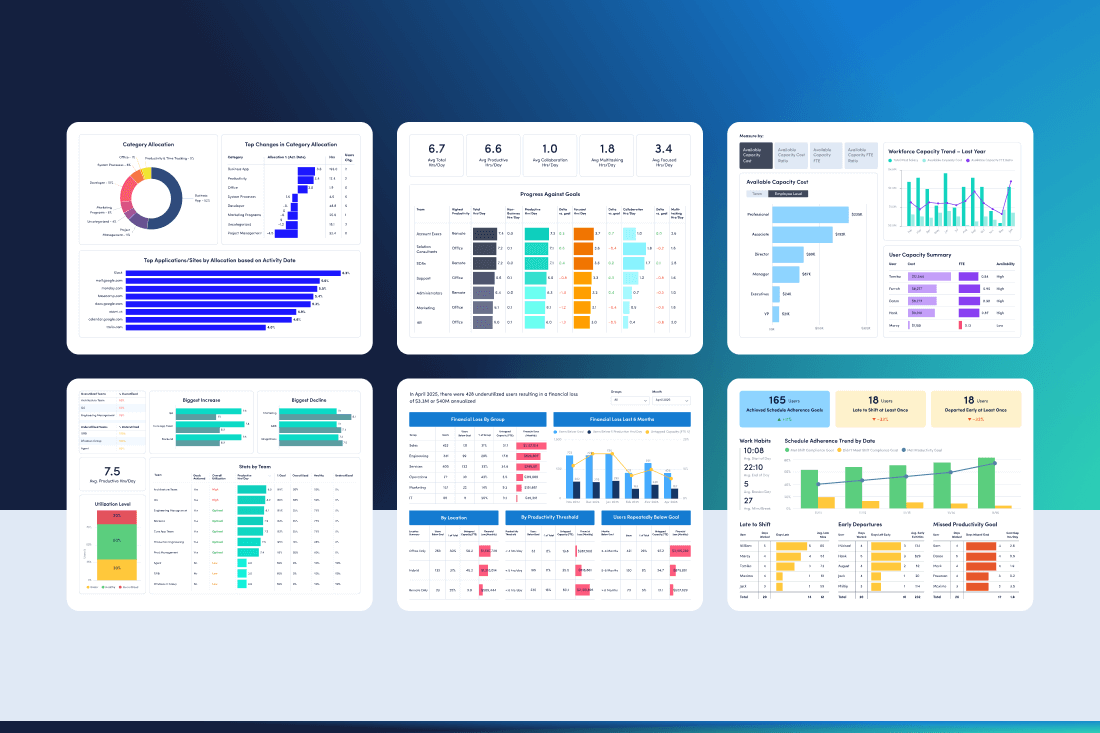Over the past few years, the nature of leadership has rapidly transformed.. Leaders face evolving challenges brought on by technological advancements and shifting workplace dynamics. To meet the demands, organizations are adapting with productive leadership.
Productive leaders today are equipped with emotional intelligence to drive team performance beyond efficiency and simple goal-setting. In this post, we’ll explore the main tenets of productive leadership, from strategy to communication to adaptability, and get eight ways to empower more productive leaders at your company.
What defines productive leadership?
Productive leadership means leaders who consistently achieve strategic organizational goals by effectively motivating employees, managing resources and promoting good work culture. It aims to lead the organization to successfully achieve goals by empowering employees to do their best work.
The goal of productive leadership is to remove barriers to productivity for every aspect of the team, including empowering employees with the right tools, clarity around goals and a healthy work environment. It’s about more than just getting the job done; productive leadership means getting the most out of resources while maintaining good employee engagement with an eye to long-term results. From supervisors to managers to C-suite executives, productive leadership goes beyond titles to maximize all aspects of the workforce across the organization
Productive leaders inspire employees to work towards a common goal based on a clearly defined mission and vision. This requires effective communication, including expectations and goals as well as how they align to company strategy. This communication is a two-way street, and productive leaders understand they must listen and integrate employee feedback into their strategies. Collaboration, transparency and accountability are all important aspects of truly productive leadership.
Why is productive leadership important?
Productive leadership is more dynamic than traditional leadership and is based on gaining strategic alignment across individuals, teams and the organization. It requires leaders to have emotional intelligence, empathy and self-awareness, which all require intentional training and implementation. Productive leaders get work done while ensuring common goals are met, managing resources efficiently and fostering employee well-being for continued success.
Adaptability is table stakes in today’s business environment, where technology disruption, market forces and even public attitudes can change an organization’s operational needs practically overnight. Productive leaders have the tools to drive necessary changes while inspiring employees to join in. Organizations that focus on productive leadership are better equipped for growth and to lead organizations through difficulty.
Because they inspire creativity and risk-taking in their teams, productive leaders prepare organizations in ways traditional leadership simply can’t. Productive leadership leads to greater collaboration, better performance and greater longevity for individual employees and the organization itself.
8 ways to provide more productive leadership for employees
Creating productive leadership requires dedication and a proactive approach. Here are a few leadership strategies to drive productive leadership in your organization.
1. Evaluate current employee productivity and processes
The best way to improve productivity is to start by analyzing the status quo and finding areas for improvement. Many organizations will compare simple inputs (resources) to outputs (work done) to determine productivity, but this doesn’t provide a full picture of productivity.
For example, understanding which technology leads to more efficient workflows or if certain apps or software tools are more distracting than helpful allows you to right-size your tech stack or provide training. Additionally, data on what times of day employees are most productive or even which location they work from gives you better insight into scheduling and remote work policies.
Productivity management software like ActivTrak empowers you to assess current productivity levels and workflows to reveal opportunities for improvement. At the very least, this data serves as a benchmark to track progress over time.
2. Set SMART goals
It’s not enough to tell employees the company needs to increase revenue or productivity. Productive leaders must set goals that are SMART:
- Specific
- Measurable
- Achievable
- Relevant
- Time-bound
To do this, major goals must first be broken down into actionable steps with specific due dates and measurable outcomes. From there, leaders must clearly communicate these steps to employees. At the same time, leaders must actively support employees in achieving these goals.
The final step in setting SMART goals is tracking them to ensure they’re met. This step feeds back into the cycle of setting new goals by providing benchmarks and showing where processes need improvement.
3. Delegate effectively
Productive leadership requires managers to delegate tasks, which can be difficult for some who prefer to be more hands-on. By delegating tasks to employees, managers spend less time on execution and more time on the big picture.
To delegate effectively, leaders must fully understand employee capabilities and trust those employees to accomplish tasks. This means getting to know employees beyond their resumes or daily tasks. Organizations should empower productive leadership by developing a strong company culture and implementing intentional workshops to build trust and reveal employees’ full potential.
4. Promote employee well-being
Mental health and wellness are the foundation of productivity. Managers should prioritize employee well-being so employees can maintain good work-life balance. This reduces stress, prevents burnout and increases employee engagement, leading to better productivity.
At the same time, prioritizing wellness shows employees that leaders care about their well-being rather than just the work they produce. This is increasingly important for reducing retention rates and ensuring the longevity of your workforce. According to a survey from Aflac, less than half of employees feel like their employers care about them. Worse, 60% of the employees who don’t feel their employers care about them said they were likely to look for a new job in the next year.
5. Cut back on meetings
Employees and leaders alike report that unnecessary meetings are the biggest waste of time and energy in the workplace today. Meetings disrupt productivity by pulling employees out of focused work. Employees spend unaccounted time preparing for meetings, moving between meeting locations and returning their focus to important tasks after meetings. Worse yet, more than half of meetings are often meaningless, either because they’re unstructured or include team members that don’t need to be there.
Finding ways to cut back on unnecessary meetings in your organization can be a game-changer. Highly productive leaders empower employees to find ways to collaborate without needing a meeting through asynchronous communication or project management tools. Additionally, these leaders encourage employees to manage their time effectively and say no to meetings when they need to focus on important work.
6. Encourage continuous learning and improvement
Great leaders encourage employees to grow and learn in their careers. This development obviously helps the company by improving the organization’s available resources. However, offering development opportunities also increases employee engagement. SHRM reports 68% of workers reported they would stay with an employer if the employer provided development opportunities to improve their skills.
Another benefit of encouraging learning and development is it gives leaders insight into what their employees do well. Additionally, managers who know their employees are receiving in-depth training are more likely to trust their employees’ skills, which leads to better delegation and employee engagement.
7. Request and use feedback
Clear communication is the key to productive leadership. Managers and supervisors must offer feedback mechanisms to employees to allow them to voice their concerns and share ideas. More importantly, leaders must take this feedback into account to show employees that leadership values their opinions. Even if management determines not to follow an employee’s ideas, acknowledging the input and its validity encourages employees to take risks and be honest at work.
8. Cultivate and lean on trust
Productive leaders must find ways to cultivate trust in their teams to encourage employee engagement, good delegation and collaboration. Organizations should empower trust-building activities including team-building, culture-building and skill-building. Every strategy above helps build trust in the organization, but good leaders must prioritize trust through clear communication and accountability.
Be a more productive leader with ActivTrak
Effective leadership in 2025 hinges on understanding an evolving landscape, embracing technology, fostering innovation, enhancing communication and promoting diverse ideas – all aspects of productive leadership.
Get the insights you need to understand your team’s work patterns and well-being for effective productive leadership with ActivTrak’s productivity management software. Manage hybrid and remote teams effectively, monitor and improve employee productivity and ensure your workforce thrives.
Contact our sales team today to get started and take the first step toward realizing your organization’s full potential.





